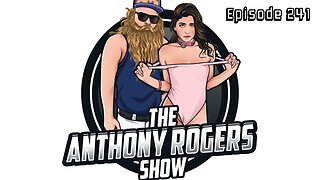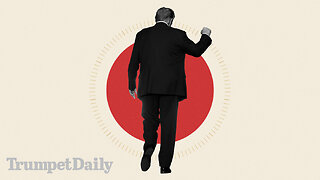[CLIP] Why Government Statistics Are Not Matching Up With Economic Realities: EJ Antoni
🔴 WATCH the full episode: https://ept.ms/S0912EJAntoni
🔵 Sign up for the American Thought Leaders ALERTS newsletter to stay up-to-date on new episodes, releases, and events 👉 https://ept.ms/ATLnewsletter
"If you have a family, let's say, who is not making enough money to buy everything they want, and so they get a bunch of credit cards, and they start racking up credit card debt in order to increase their spending today, what they're essentially doing is pulling forward from the future income into today to increase today's consumption.
The problem is that you can only do that for so long, and eventually that debt starts to catch up with you. You have the cost to service that debt. Eventually, that debt needs to be repaid.
And so you end up having to sacrifice future consumption in order to pay down that debt because your future income now needs to be used to not only provide for that future consumption, but pay yesterday's consumption as well.
Now, in some cases, this is highly desirable, right? There are plenty of instances where we go into debt, like to buy a home, in order to increase our consumption today, particularly when we can anticipate in the future having a higher income than we do today.
Unfortunately, what we're doing right now at the government level is the equivalent of that family going into much more credit card debt than they even have in terms of annual income, to the point where just the cost to service that debt - in other words, the interest on those credit cards - is starting to eat into their budget.
So, they are spending so much just in monthly finance charges that now they're having trouble paying their rent, to pay for groceries, to put gas in the tank of the car, etc. That's where we are at today. And again, eventually, all of that debt has to get paid back.
And the fact that it's already starting to bite means that debt bomb is already starting to go off, and we are now at a point where the family is paying so much in interest on the credit cards that there's not enough money left in the budget to afford it.
In other words, you can't pay your minimum on this credit card, and so you do a balanced transfer to a new card, let's say. And you keep having to do the same thing month after month. You're having to move debt around. You're going into more debt just to pay the interest. It's a big downward spiral, right?
And again, eventually, when the debt collector comes knocking, you have to drastically cut back your consumption, even if it's of necessity. You have to cut back in order to try to pay down some of this debt, and it's going to be really, really painful.
Now, where the analogy breaks down is the fact that the family can't run a counterfeit operation in their basement and just print pieces of paper and call it money.
The federal government can. Now, we call that 'inflation.' But what the Federal Reserve has essentially been doing to help finance this runaway debt for the federal government is to create out of nothing money for the Treasury Department to spend.
And when they do that, they devalue the dollar. They are essentially siphoning off a small portion of the value of all the dollars that are in existence and putting it into the new dollars that they create for the Treasury to spend. But it does provide Congress with the money that they wanted." - EJ Antoni
-
![[CLIP] How a Tiny Country Launched a Tech Revolution: George Gilder](https://1a-1791.com/s/s8/6/f/F/z/I/fFzIt.0kob.jpg) 9:46
9:46
American Thought Leaders
8 days ago[CLIP] How a Tiny Country Launched a Tech Revolution: George Gilder
3.1K5 -
 55:09
55:09
Flyover Conservatives
22 hours agoHollywood’s Dark Side: The Transgender Symbol of Satan & the Rise of Baphomet - Clay Clark; The Cultural Shifts Away from Kamala Harris | FOC Show
20.8K5 -
 2:28:50
2:28:50
WeAreChange
6 hours agoDiddy Foreknowledge Surfaces! All UNRAVELING Now In Hollywood?!
67.8K28 -
 1:20:48
1:20:48
Michael Franzese
1 day agoDemocrat's Message: "Who will rid us of Trump?" | Michael Franzese LIVE! Ep. 20
48.2K174 -
 1:06:31
1:06:31
Josh Pate's College Football Show
5 hours agoWeek 5 Predictions: UGA vs Alabama | OU vs Auburn | Big JP Poll Moves | Surprises & Disappointments
30.1K2 -
 1:10:38
1:10:38
The Anthony Rogers Show
9 hours agoEpisode 241
8.67K -
 54:45
54:45
LFA TV
1 day agoTargeting Donald Trump | Trumpet Daily 9.24.24 9PM EST
15.9K11 -
 59:23
59:23
The StoneZONE with Roger Stone
5 hours agoFmr. FBI Agent Questions West Palm Attack On Trump | The StoneZONE w/ Roger Stone
28.4K3 -
 1:10:30
1:10:30
Edge of Wonder
5 hours agoDiddy’s Downfall: How the Power of Music Can Be Weaponized
28.9K8 -
 21:09
21:09
Breaking Points
10 hours ago100% DROP In Afghan Opium: How CIA Propped Up Drug Trade For Years
38.7K18